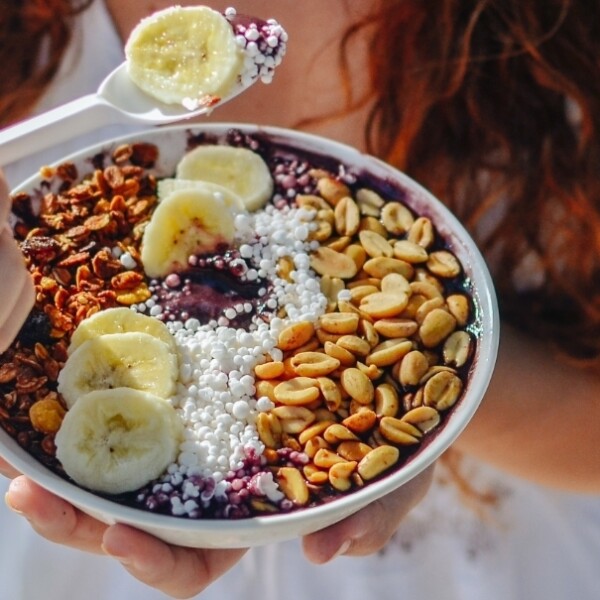

Superchargers: In-Demand Prebiotics Feed Probiotics
Not all fiber is created equal. With Fibersol®, you get more than just a dietary fiber ingredient. You get a prebiotic dietary solution.
Prebiotics vs. Probiotics: What’s the Difference, Exactly?
Simply put, probiotics are good living bacteria and prebiotics are the food that promotes their growth.
Definitions of Probiotics & Prebiotics
More specifically:
- Probiotics are defined as: “Live microorganisms that, when administered in adequate amounts, confer a health benefit on the host.”1
- Prebiotics are defined as: “a substrate that is selectively utilized by host microorganisms conferring a health benefit.”2 The concept includes three essential parts: a substance, a physiologically beneficial effect, and a microbiota-mediated mechanism.2
Both prebiotics and probiotics play an important role in health and wellness; eating both can help promote a balance of bacteria to keep the overall gut microbiota healthy.3
The Consumer Demand for Prebiotics & Probiotics
The interest in—and demand for—these important substances is substantial.
According to the IFIC 2022 Food and Health Survey Report:4
The percentage of Americans who say they generally try to consume:
- Probiotics = 35%
- Prebiotics = 25%
And, consumer awareness and interest of both is even higher, at:
- Probiotics = 60%
- Prebiotics = 55%
Of those consumers who seek digestive/gut health benefits, 33% seek prebiotic and probiotic dietary supplements, equally.
Consumers seek out pre- and pro-biotic ingredients across a variety of formats:4
Prebiotics:
- From foods: 55%
- From beverages: 32%
- From dietary supplements: 45%
Probiotics
- From foods: 50%
- From beverages: 32%
- From dietary supplements: 54%
Prebiotics Feed Probiotics
Prebiotics are substances that come from types of carbohydrates (mostly fiber) that humans can’t digest. The beneficial bacteria in your gut can digest this fiber.5 Prebiotics, which may be found in high-fiber foods, act as food for human gut microflora and are used to nourish the microflora and promote gut function.6
How do prebiotics work?
Prebiotics act as a ‘fertilizer’ to promote the growth and health of probiotic bacteria, which in turn, can promote healthy digestive function, support immune health and influence overall wellness.1
When prebiotics feed the good intestinal bacteria and are fermented, short-chain fatty acids are produced, which are associated with benefits for health.6
A Growing Opportunity
Prebiotics have real potential, and they represent opportunity for significant growth in today’s marketplace. According to those surveyed:4
- 26% have tried prebiotics and would use them again
- 37% are interested in trying prebiotics
It’s important to note that prebiotics are less often consumed than probiotics, suggesting these ingredients tend to be sought out for intentional consumption to achieve a specific health benefit.4
According to Mintel, “While awareness and interest in trendy claims or functions may rise and fall, what will persist longer term and find cross-generational appeal are reinforced informational connections between nutrients and ingredients to more specific needs...such as prebiotic fiber for gut health.”6
Prebiotic Fibersol® Dietary Fiber
Not all dietary fibers are prebiotic. Although most prebiotics are fiber, not all fiber is prebiotic. Only fiber that that is selectively utilized by host microorganisms conferring a health benefit is prebiotic.
By definition, Fibersol® is a prebiotic fiber—utilized by host microorganisms that confer a health benefit. Fibersol® addresses consumers’ interest in both healthy digestion and holistic gut health.
At 15g per day (3.75g of Fibersol®-2 4x per day) Fibersol®:
- May help nourish the intestinal flora and maintain a healthy intestinal tract environment.†
- Supports front of pack claims “Contains/provides prebiotic fiber” on products with 3.25+g Fibersol.®‡
- Supports “Well-tolerated prebiotic” on applicable products.
†For a total of 15g per day over 3 weeks.
‡2.8g fiber from Fibersol®, corresponding to 10% DV for fiber.
§”Effect of Indigestible Dextrin on Visceral Fat Accumulation” Takushi Yamamoto, Kunio Yamamoto, Yoshinori Fukuhara, Toshihiro Fukui, Yuka Kishimoto, Kazuhiro Okuma, Yasuhiro Matsuoka, Koji Isozaki, Kazuhiro Nagao, Takae Yamamoto, Katto Tokunaga; Journal of Japanese Society for the Study of Obesity, 2007 (13) 34-41.
Fibersol® in Virtually Any Application
Consumers are seeking the versatility, efficiency and ease that food, beverages and dietary supplements can contribute to gut health overall.
According to Mintel, “Food and drinks are a natural and easy fit for consumers who seek to support gut health...”7 Overall, consumers equate consumption of good food, drinks or supplements to good health, and they view health benefits as a top value indicator.7
Find out how easy it is to add prebiotic benefits to your brand and your label, with Fibersol® dietary fiber products. Contact us today.
1 ISAPP, https://isappscience.org/for-s...
2 ISAPP, https://isappscience.org/for-scientists/resources/prebiotics/
3 Probiotics and Prebiotics: What’s the Difference?, https://www.healthline.com/nut...
4 IFIC 2022 Food and Health Survey Report
5 Mintel, Functional Ingredients in Food & Drink – US – 2023
6What are probiotics and prebiotics? Nutrition and healthy eating, Katherine Zeratsky, R.D., L.D. https://www.mayoclinic.org/healthy-lifestyle/nutrition-and-healthy-eating/expert-answers/probiotics/faq-20058065
7Mintel, Food & Drink Nutrition Claims – US – 2022

